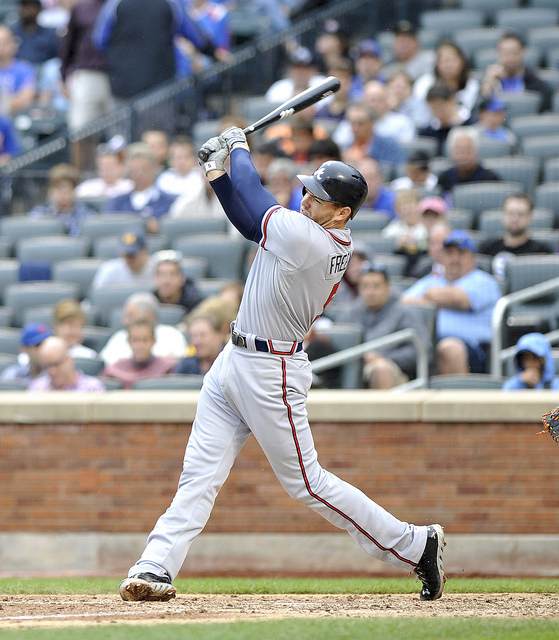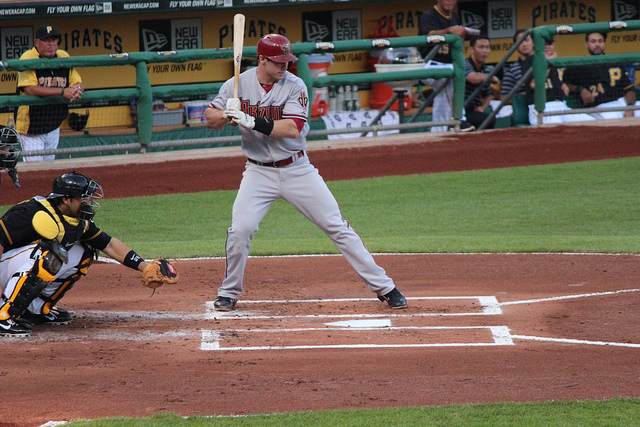Will Anthony Rizzo Be Undervalued in 2014?
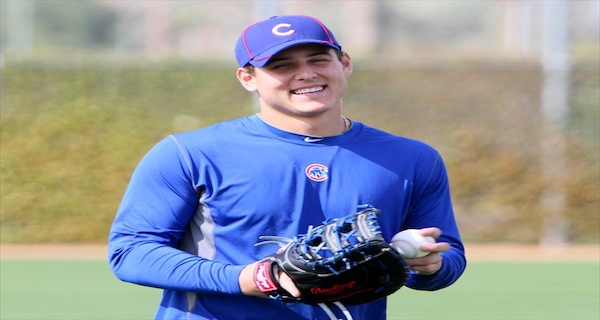
There are pretty solid odds that if you’re reading this piece you were on the Anthony Rizzo hype train as it roared into 2013. I was. I considered Rizzo one of players most likely to break out. When Dan Szymborki’s ZIPS projection came out I got even a little more excited; because I’m usually brought back to Earth by them.
By the end of the season the train came to a screeching halt. The trade that sent Rizzo to the Cubs was suddenly being questioned. Could the Padres have won the deal by acquiring the oft-injured Andrew Cashner? I was a little taken aback. Sure, Rizzo underperformed his expectations, but were people actually saying they’d rather have Cashner going forward? Anyways, that seemed odd, back to the fantasy implications of his 2013 campaign.
2013 – A Year To Forget
Rizzo’s 2013 should have been much better than it was. If I were to tell you that his peripherals would stay essentially the same – his walk rate ticked up a lot, his strikeout rate ticked up a tad, and his ISO improved 12 points – you would probably assume he had a monster season considering how well he performed in 87 games in 2012. Unfortunately, that wasn’t the case.

The main thing I want to focus on in this chart is his babip in 2013. That’s extremely low. In fact, Rizzo had the 9th lowest babip among qualified hitters. The first thing I look at when I see a babip that low is the hitter’s batted ball profile. . If they’re popping a lot of balls up on the infield then that can help explain a little bit of it (see: Dan Uggla). Rizzo’s infield fly rate only increased about 3% in 2013, but it was still under 10%.
Other portions of Rizzo’s batted ball profile did change a good bit however. He began hitting way more flyballs; nearly and 8 percentage point increase. And while it’s good for his home run production it isn’t good for his babip. Hitters who hit balls in the air with a great amount of frequency tend to have lower babips (think Pedro Alvarez, Edwin Encarnacion, etc.). It’s a tradeoff that’s necessary for most power hitters in order to hit an adequate amount of dingers. It’s a tradeoff that I hope Rizzo sticks with because it’ll be much easier for him to reach his power potential with his increase in flyballs.
Just how unlucky was his .258 babip? According to Fangraphs’ Mike Podhorzer Rizzo’s xbabip (expected babip) was .297 so he was fairly unlucky in 2013; to put it mildly
Could Rizzo have gotten a little pull happy and began hitting into shifts more often?
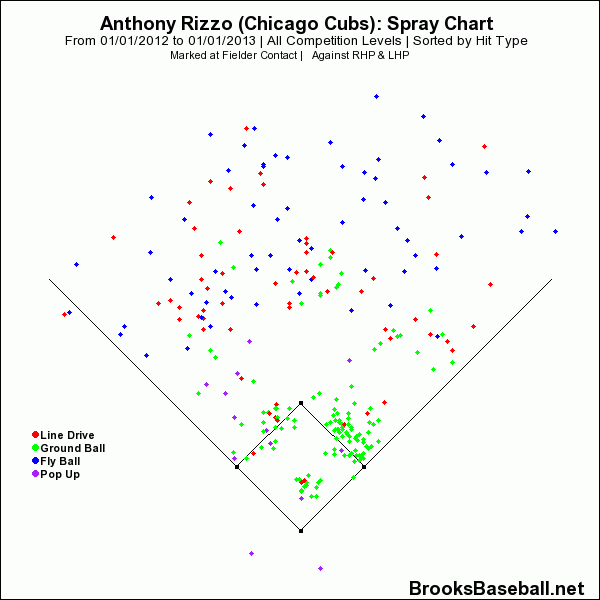
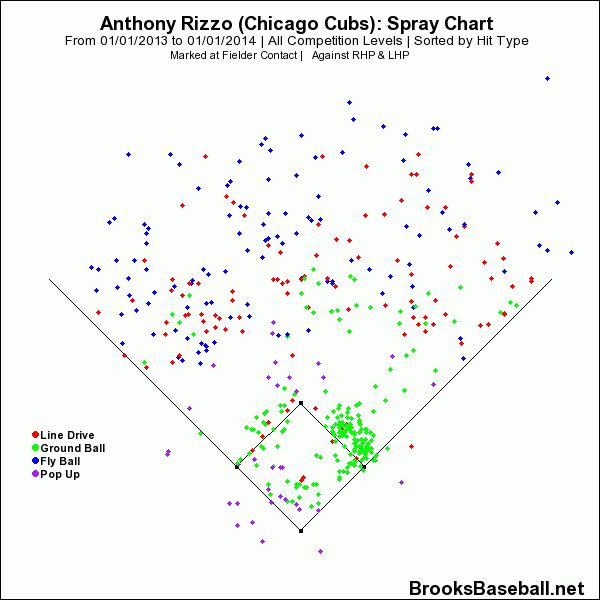
Rizzo, like nearly everyone else, pulls a fair amount of balls; but he also has a tremendous opposite field stroke. 2012 was a much smaller sample size than 2013, but it looks like Rizzo might have actually driven the ball to the opposite field a little better in 2013 than he did in 2012 (notice all of the deep blue dots from left field to left center). Everything seems all good here; in fact his 2013 spray chart reminds me a little of Adrian Gonzalez when he went the other way with such authority. Rizzo obviously isn’t on that level yet – there are pretty good chances he never will be – but it’s a very good thing to see him going the other way often.
We’ve pretty much established at this point that Anthony Rizzo just ran into a rash of bad luck in 2013. It happens. Will he ever post a high babip consistently? Probably not. His batted ball profile (increased flies) and mediocre speed will make sure of that, but it shouldn’t wallow in the 250’s either.
What Do We Get in 2014?
If you have Rizzo at a good price, keep him. If you don’t have him, target him; whether it’s by trade or in your draft for 2014. Rizzo was the same hitter in 2013 that he was in 2012; possibly better. He chased less, walked more, made the same amount of contact, and got a little more valuable experience. He did lose a little distance on his flyballs, but it shouldn’t be enough to damper his power output potential. In fact, Rizzo ranked 30th in average homer distance with an average distance of 404 ft. That number gives him an average homer distance that’s better than: Robinson Cano, Paul Goldschmidt, and Miguel Cabrera. Mr. Rizzo has massive power.
Rizzo’s 2014 steamer projections – posted above – arguably make him a top 7 or 8 1B in 2014 if he reaches them. It wouldn’t surprise me at all if he out produced them.


